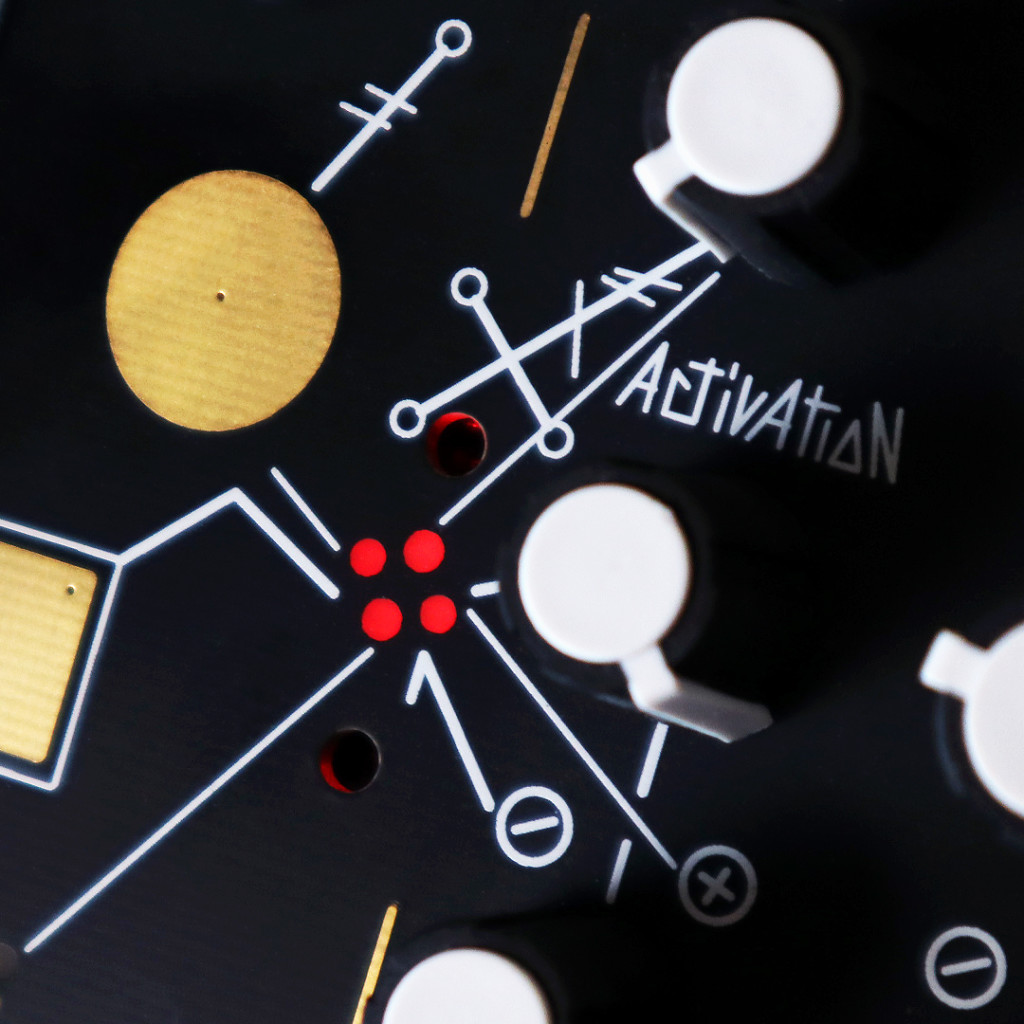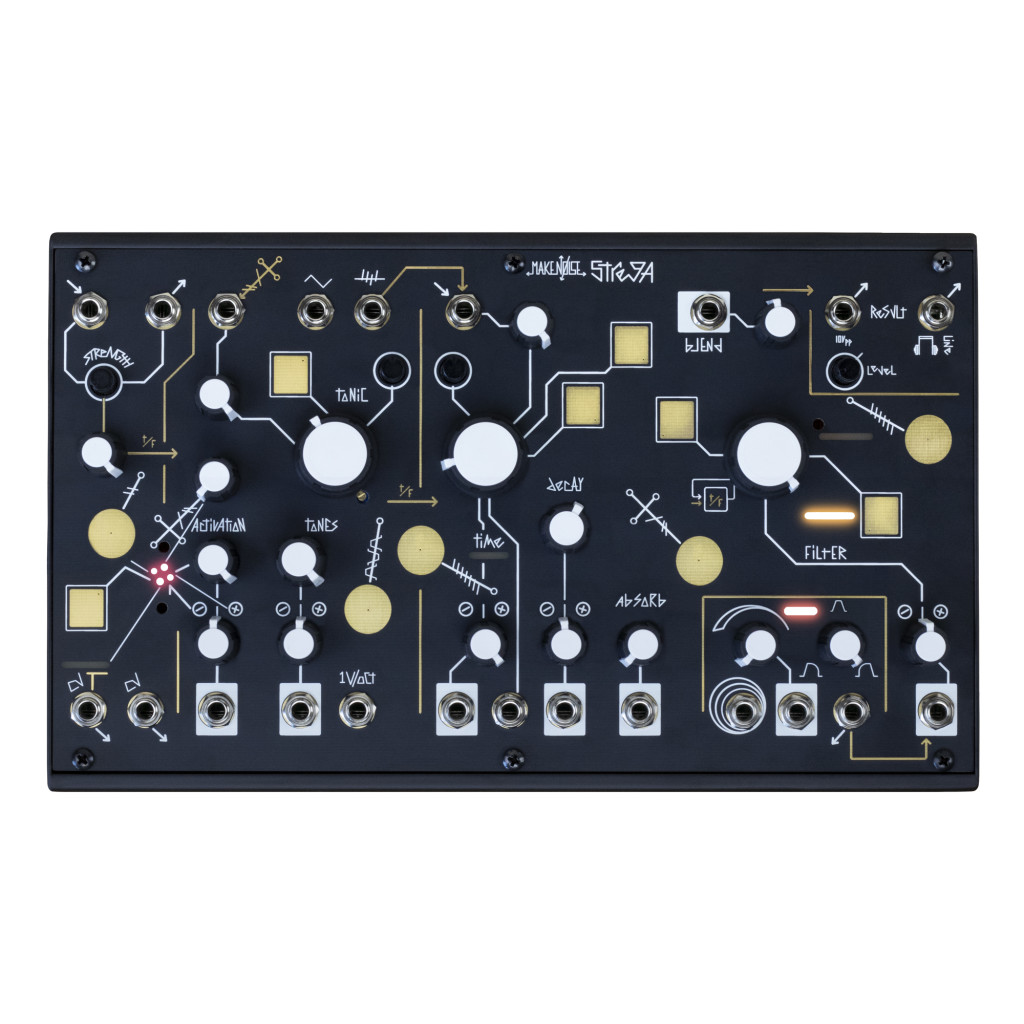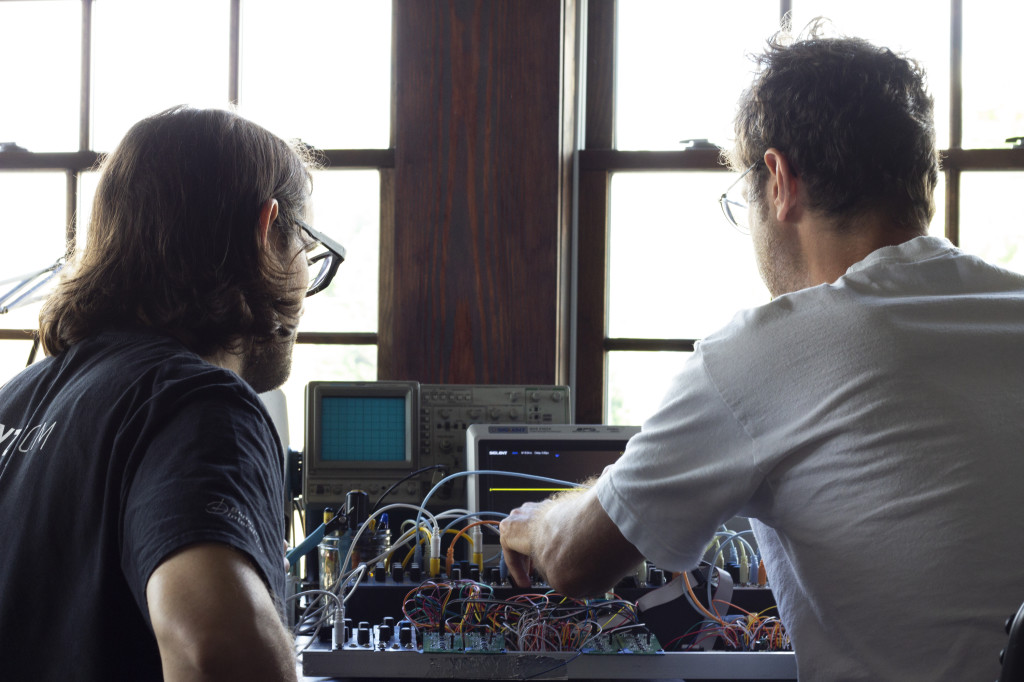Strega is the new Make Noise invention – a tone maker, control instrument, and effects processor. It’s also an artistic collaboration with Alessandro Cortini. CDM talks to Make Noise about what that’s about.

Composition and instrument creation … live musical performance and engineering – these are naturally intertwined matters. And Make Noise have made their name in the analog and modular world partly by producing unique, idiosyncratic, alchemic oddness. Their stuff suggests exploration and experimentation. It just isn’t like other gear. Glyphs and runes, organically spread knobs – it seems like it might have been produced by some modern techno Druids.
So, Strega – let’s first talk about what it is, apart from the fact that infamous electronic musician Alessandro Cortini (known both for his solo work and with Nine Inch Nails) collaborated on it.
It’s in the same form factor as the 0-CTRL and 0-COAST and of course is designed as a companion to those already-popular devices. But it appears to coexist with whatever gear you have (which nowadays might be Eurorack but might also be patchable desktop music toys, too).

Specs:
- 7 sources, 13 destinations
- External audio input for processing
- Momentary modulation routings with touch (almost recalling circuit bending stuff)
- Steel enclosure
- Headphone out, line out, and Eurorack out for modular patching (plus you can use your Euro CV signals)
- 0.8 kg (1.7 lb)
- US$599
That price means this is also a unique instrument that isn’t way up in Eurorack rig or high-end boutique range.
Ships later this month.
Anthony Rolando of Make Noise, the mind behind all this madness, talked to CDM about the story behind the instrument.

CDM: How did Strega come about?
AR: Alessandro and I had become friends through a non-completed instrument project with Scott Jaeger and myself. Surachai and I asked him to be a part of the original Shared System Series of records and he complied turning in the wonderful ACMN1 and ACMN2 which you may hear at his Bandcamp today.
Later he had contacted Make Noise to get a Shared System for stage use with Nine Inch Nails. The system served him well and he started to ask me about modifications to it in order to allow for ease in set-up live. That led to the development of the CV Bus. We just kept in touch and talking about music and I got him to do another record for Make Noise Records, SPIE, which is a gorgeous piece of music. You may get that at his Bandcamp as well. At this point, he began talking about an instrument. We met many times over the next 3-4 years just discussing different things we could do. There were so many ideas and concepts put on the table… it is amazing we settled on anything, but we finally did and that thing is Strega.
What was the collaboration like – how were they communicating, what was the process?
It was completed before the pandemic, so Alessandro and I worked on the design together in NYC, LA, and Berlin several times, and then he came to Asheville to work with us for a week. The remaining development occurred in Asheville at Make Noise and was done via mail where Devin would build a prototype, I would tweak it and send to Alessandro. He would play it and make suggestions. Devin would build another unit, send it to Alessandro, hand waving, circuit changes… repeat, repeat – until we got it right.
I’m curious when you say it’s built around Alessandro’s process, what that means – in terms of his performance, can you talk specifically about that? Any concrete features that grew out of that?
I listened to all his records and watched him play many solo shows on the Music Easel, Synthi, and Shared System. An example of design considerations toward facilitating his process: being able to introduce saturation at several different stages in the signal flow, not just in one place at the beginning or the end, and the ability to introduce fluctuations in the sound by hand.
How does it relate to the other 0-products?
Same form factor and they communicate well with each other. I really enjoy controlling the 0-COAST and Strega with 0-CTRL and then patching the 0-COAST into the Strega.
There’s an unseen or magical element you talk about – not sure if you can put that into words, but what’s the magical side of this for engineers? I saw one writer refer to “witchcraft,” which CDM is always into somehow – even scientific witchcraft.
I feel the magic is a sound, behavior, or functionality discovered by being open to results that are not specified by the manufacturer of the technology being used or circuit variants not detailed in the application notes or component values not approved by your reference text. It is a lot like the magic some musicians find by programming a synthesizer “incorrectly.”
Oh and on the engineering side – anything you think our readers might be interested in that they could have missed elsewhere?
We used a fully analog firmware implementation, it would require changing too many resistors to update in the field. I really hope we got it right.
For more on this, our friends over at Sonic State talk to Alessandro (now in his studio in Portugal) about the creation:
Product info:
http://makenoisemusic.com/synthesizers/strega
Ships late February.